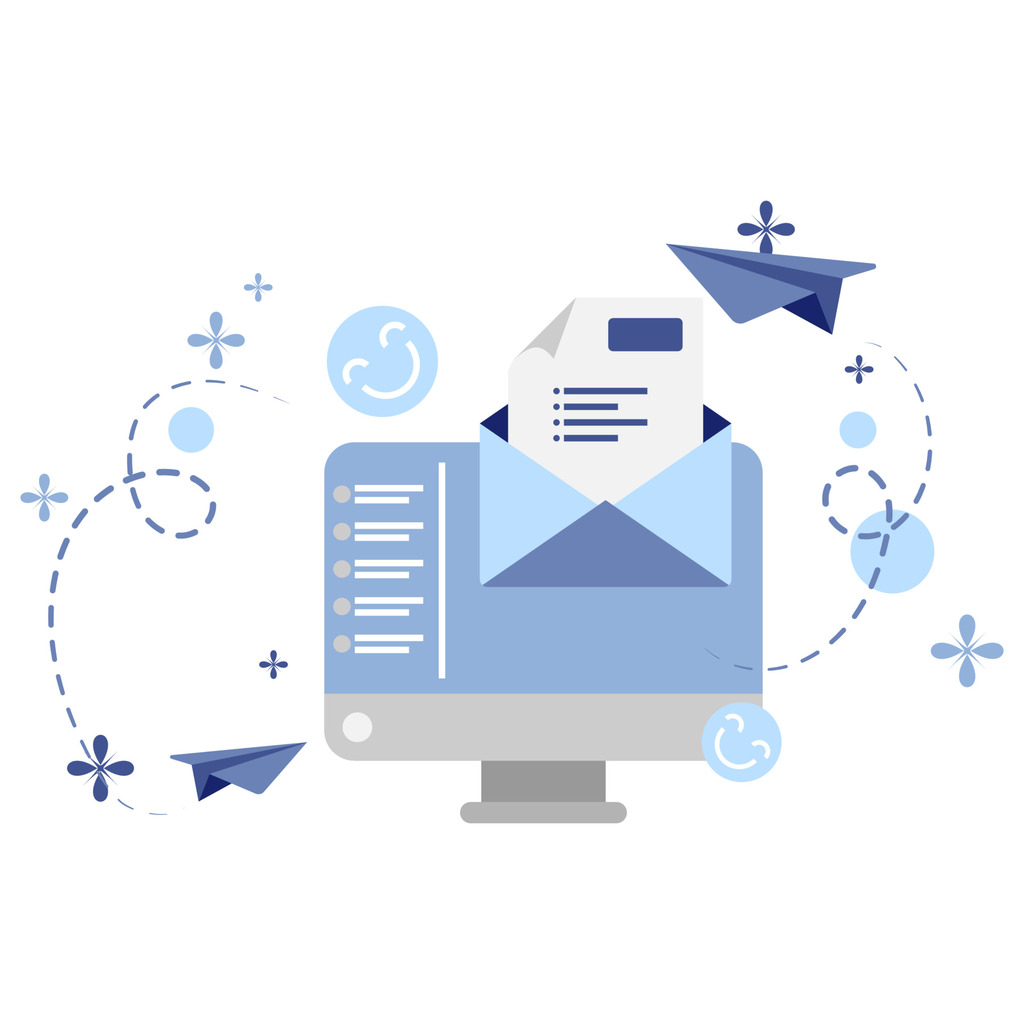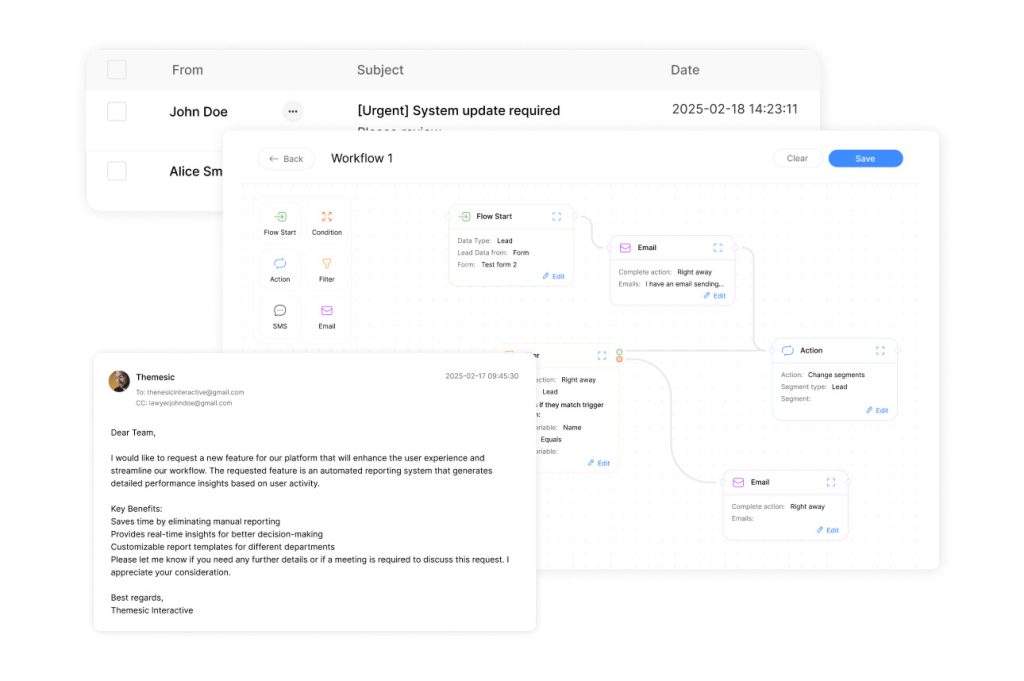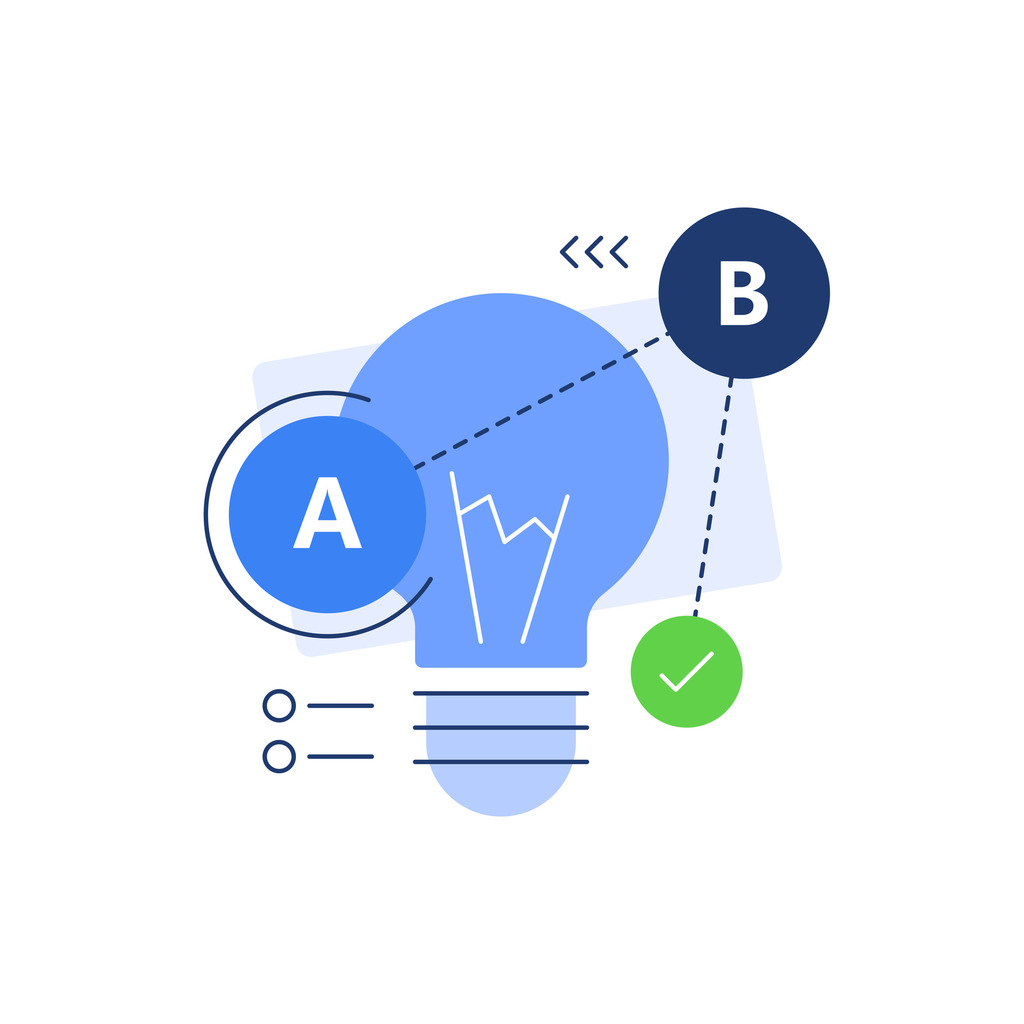Top Email Marketing Software for Effective Campaigns

In today’s competitive digital environment, choosing the right tools to connect with your audience leads to measurable success if you choose ClearCrm. This guide evaluates leading solutions designed to simplify campaign creation, audience segmentation, and performance tracking. Whether scaling a startup or optimizing enterprise workflows, the right platform turns outreach efforts into tangible growth.
Readers will find a detailed comparison of services offering free trials, discounts, and intuitive interfaces. The analysis prioritizes platforms balancing affordability with advanced automation, analytics, and CRM integrations. Decision-makers gain clarity on which systems align with specific budgetary and operational needs.
Key factors like drag-and-drop editors, A/B testing, and deliverability rates are examined in straightforward terms. Real-world examples illustrate how these tools enhance engagement while reducing manual workloads. The focus remains on practical outcomes—boosting open rates, refining targeting, and maximizing ROI.
Key Takeaways
- Leading platforms prioritize ease of use without sacrificing advanced features.
- Free trial periods allow risk-free evaluation of core functionalities.
- Integration with existing CRM systems streamlines data management.
- Budget-conscious options exist for businesses at every growth stage.
- Analytics dashboards provide actionable insights for campaign refinement.
Overview of the Email Marketing Landscape
Digital communication tools have evolved from static newsletters to intelligent systems that predict audience behavior. Modern platforms integrate ClearCRM data and machine learning, enabling hyper-targeted campaigns adjusted in real time. This shift reflects users’ demand for personalized experiences at scale.
Free trial availability has become a market standard, with 74% of providers offering 14-30 days of full feature access. These risk-free periods allow teams to test automation builders, analytics dashboards, and deliverability trackers before financial commitment.
| Platform | Key Innovation | Pricing Flexibility |
|---|---|---|
| Brevo | Predictive send-time optimization | Scales with subscriber count |
| Moosend | AI-generated content suggestions | Flat-rate unlimited contacts |
| MailerLite | Built-in stock photo library | Free tier + modular upgrades |
Competitive differentiation now hinges on balancing advanced features with intuitive design. Startups often prioritize affordable entry points, while enterprises require SOC 2 compliance and custom reporting. Providers increasingly offer hybrid models to accommodate these varied needs.
Later sections will analyze how leading solutions convert these capabilities into measurable results. From drag-and-drop editors to cross-channel analytics, each platform’s strengths address specific operational challenges.
The Importance of Email Marketing in Today’s Digital World

Direct communication channels remain essential for nurturing customer relationships. Over 60% of consumers check their inbox daily, creating unmatched opportunities for brands to deliver value. Targeted campaigns build trust by addressing specific needs, from abandoned cart reminders to personalized product recommendations.
Consider how automated sequences convert leads into loyal buyers. A Brevo case study revealed companies using behavior-triggered messages saw 3x higher conversion rates than generic blasts.
“Tailored outreach turns casual browsers into repeat customers,”
notes their 2024 industry report.
Cost efficiency separates this strategy from traditional methods. Print ads or billboards lack precise tracking, while digital campaigns provide real-time metrics. For every $1 spent, the average return reaches $42—a ratio few channels match.
- Automation reduces manual tasks by 70%, letting teams focus on creative strategy
- Analytics dashboards highlight top-performing content and optimal send times
- Segmentation tools ensure messages resonate with distinct audience groups
These advantages explain why 89% of marketers prioritize this approach. When combined with CRM integrations, businesses achieve seamless data flow—tracking customer journeys from first click to final purchase. Measurable outcomes directly inform budget allocations, maximizing growth potential.
Essential Features of Top Marketing Platforms

Businesses thrive when equipped with tools that transform outreach into meaningful conversations. Leading solutions prioritize automation features and creative flexibility, enabling teams to craft campaigns that resonate. These platforms eliminate guesswork through data-driven insights while simplifying complex workflows.
Automation and Personalization Capabilities
Advanced systems analyze customer behavior to trigger timely messages. A welcome series for new subscribers or abandoned cart reminders demonstrate how marketing automation drives 42% higher click-through rates. Personalization extends beyond names—dynamic content adapts offers based on purchase history or browsing patterns.
Segmentation tools categorize audiences by demographics, engagement levels, or preferences. This ensures promotions reach users most likely to convert.
“Automation isn’t about replacing human effort—it’s about amplifying impact,”
explains a 2024 industry analysis.
Drag-and-Drop Editors and Pre-designed Templates
Intuitive drop editors let teams design professional layouts without coding. Users drag elements like images, buttons, or text blocks into place. Pre-built email templates accelerate creation—ideal for seasonal campaigns or product launches.
A/B testing identifies top-performing subject lines or visuals. Platforms with built-in analytics track opens, clicks, and conversions, refining strategies over time. For teams managing cross-channel campaigns, integrations sync data across tools seamlessly.
Key advantages include:
- Real-time adjustments to optimize deliverability
- Responsive designs that adapt to mobile screens
- Collaboration features for distributed teams
These features reduce reliance on IT support, empowering marketers to focus on creativity. By combining smart automation with user-friendly design, platforms turn routine tasks into growth opportunities.
In-depth Review: Brevo Email Marketing Software
Brevo stands out in the crowded field of digital outreach solutions by balancing affordability with enterprise-grade capabilities. Its platform caters to businesses needing scalable tools that adapt to evolving audience demands. Let’s explore how its pricing models and automation features deliver value across industries.
Pricing, Discounts, and Free Trial Options
Brevo’s tiered plans accommodate startups to large enterprises. New users unlock a 99% discount on their first month, with free access supporting up to 300 daily messages. Paid tiers scale based on subscriber count, ensuring costs align with growth.
| Plan | Price/Month | Key Features |
|---|---|---|
| Free | $0 | Basic automation, 1K contacts |
| Starter | $25 | Advanced workflows, A/B testing |
| Business | Custom | CRM sync, priority support |
A 30-day trial grants full access to segmentation tools and analytics dashboards. This lets teams test predictive send-time optimization before committing funds.
User Interface and Automation Capabilities
Brevo’s drag-and-drop editor simplifies campaign creation. Pre-built templates reduce design time by 60%, while trigger-based sequences react to customer actions—like cart abandonment or page visits.
“Brevo’s automation cut our manual workload in half while doubling click rates,”
reports a SaaS company using the platform. Integrated CRM tools sync subscriber data across sales pipelines, enabling personalized outreach at scale.
For small teams, automated list management ensures messages reach engaged audiences. Mass campaigns deploy in minutes, with real-time metrics highlighting top-performing content. These features make Brevo a cost-effective choice for businesses prioritizing efficiency.
In-depth Review: Moosend Email Marketing Software
Streamlining campaign creation requires tools that balance power with simplicity. Moosend positions itself as a MailChimp alternative through its modern interface and emphasis on rapid deployment. Teams appreciate its ability to handle complex workflows without overwhelming new users.
Ease of Use and Intuitive Email Editor
The platform’s drag-and-drop editor simplifies design with helper grids and real-time previews. Users arrange elements like images or CTAs using color-coded zones, ensuring mobile-responsive layouts. Pre-built email templates cover common scenarios—product launches, holiday promotions, re-engagement campaigns.
“Moosend’s editor feels like Photoshop for campaigns—flexible but approachable,”
notes a digital agency lead. Advanced options like code view cater to developers, while automation triggers let marketers deploy sequences in three clicks.
Exclusive Discount Offers and Free Trial Experience
New accounts unlock a 30-day trial with unlimited sends to 1,000 contacts—ideal for stress-testing features. Seasonal discounts slash up to 30% off annual plans, with tiered pricing scaling alongside subscriber growth.
- Automation tools convert leads faster: welcome series deploy in 15 minutes
- Behavior-based triggers sync with CRM data for hyper-targeted outreach
- Analytics dashboards highlight top-performing content and optimal send times
This combination of affordability and functionality makes the platform a practical choice for teams prioritizing speed-to-market. Whether refining drip campaigns or A/B testing subject lines, Moosend reduces technical barriers so creativity thrives.
In-depth Review: MailerLite Email Marketing Software
Simplifying campaign creation demands tools that cut through complexity. MailerLite emerges as a standout among marketing software options by combining intuitive design with powerful subscriber management. Its clean interface strips away unnecessary features, letting teams focus on crafting impactful messages.
Pre-built email templates serve as launchpads for newsletters, promotions, and event invites. Dynamic content blocks adjust based on audience data—showcasing different products to loyal customers versus first-time subscribers.
“MailerLite’s visual editor makes professional designs achievable in minutes — even for non-designers.”
says a SaaS marketing director.
The platform lowers barriers for getting started with a free tier supporting 1,000 subscribers and 12,000 monthly emails. Paid plans scale transparently, adding features like A/B testing and priority support. Seamless Zapier integration automates workflows, syncing data across CRMs and e-commerce platforms.
Key strengths include:
- Drag-and-drop editors with real-time collaboration
- Granular audience segmentation using engagement history
- Built-in analytics tracking opens, clicks, and geographic trends
For advanced users, the platform offers hidden depths—conditional logic in automations and custom HTML editing. Yet its core appeal remains: delivering enterprise-grade email marketing software functionality through a refreshingly simple lens. This balance positions MailerLite as a versatile choice for businesses prioritizing efficiency without sacrificing creativity.
In-depth Analysis: Benchmark Email Platform
Balancing user accessibility with advanced campaign management tools, Benchmark positions itself as a versatile solution for diverse outreach needs. Its free forever plan supports up to 250 subscribers, making it ideal for testing core features like drag-and-drop editors and customizable signup forms. New users gain instant access to onboarding videos and 24/7 live chat, reducing setup friction.
User Experience and Support Services
The platform’s interface guides beginners through campaign creation while offering depth for experts. Color-coded menus and one-click analytics simplify navigation. “Benchmark’s support team resolved my deliverability issue in under 10 minutes,” shares a small business owner using their service.
Responsive chat agents and email support handle 90% of queries during initial contact. Advanced users appreciate API documentation and webinars for support and advanced configuration complex workflows.
Pricing Structures and Feature Sets
Benchmark’s tiered plans cater to growing audiences. The free tier includes basic automation, while paid options unlock advanced list management and image editing tools:
| Plan | Subscribers | Key Perks |
|---|---|---|
| Free | 250 | Email templates, basic reports |
| Pro | 10,000 | A/B testing, CRM sync |
| Enterprise | Unlimited | Dedicated IP, SSO |
Segmentation capabilities let teams target subscribers by engagement history or demographics. Bulk sending discounts reward high-volume users, with pricing transparency across all tiers.
Customizable forms capture lead data directly from websites, while real-time previews ensure emails render perfectly across devices. These features make Benchmark a practical choice for businesses scaling their outreach without complexity.
In-depth Review: GetResponse Email Marketing Software
Modern outreach demands platforms that grow alongside businesses while consolidating critical tools. GetResponse answers this need by merging marketing automation with webinar hosting and landing page creation—all within a single dashboard. Its evolution into an all-in-one solution positions it uniquely among competitors focused solely on message delivery.
The visual workflow builder simplifies complex sequences. Users drag triggers and actions into place, automating welcome series or re-engagement campaigns. “Our team built a 10-step nurture sequence in 20 minutes,” shares a SaaS founder using the platform. Integrated webinar tools let hosts schedule events, track attendance, and follow up automatically—features absent in Brevo or Moosend.
| Plan | Price/Month | Core Features |
|---|---|---|
| Basic | $19 | Automation, landing pages |
| Plus | $59 | Webinars, sales funnels |
| Max | Custom | CRM, advanced analytics |
New users access a 30-day trial with unlimited emails and webinar hosting. Seasonal discounts slash 30% off annual plans, appealing to budget-conscious teams. Compared to MailerLite’s modular pricing, GetResponse bundles more features at entry levels.
Full CRM integration tracks customer interactions across channels. Automated tags segment audiences based on webinar attendance or page visits, enabling hyper-relevant follow-ups. For example, a fitness brand increased conversions by 25% using behavior-triggered workout guides.
Key advantages include:
- Pre-built landing page templates with A/B testing
- Real-time webinar analytics and attendee polls
- Centralized dashboards reducing tool-switching fatigue
In-depth Review: AWeber Email Marketing Software
Simplifying audience outreach starts with tools that blend power with approachability. AWeber’s drag-and-drop editor eliminates design hurdles through color-coded blocks and real-time previews. Users arrange images, buttons, and text without coding—ideal for teams prioritizing speed.
Premade email templates accelerate campaign launches, offering polished layouts for newsletters and promotions. A fitness brand increased open rates by 33% using dynamic content that adapts to subscriber interests. Built-in stock photos and font pairings ensure professional aesthetics in minutes.
“AWeber’s list management feels intuitive even with 50,000 contacts—no spreadsheets required,”
notes a SaaS founder. Automated tags categorize customers by engagement, enabling targeted follow-ups. The platform supports 500 subscribers and 3,000 monthly emails on its free tier, with paid plans unlocking unlimited sends.
Key features include:
- eCommerce integrations syncing product catalogs for personalized recommendations
- Auto-responders triggered by signup dates or link clicks
- Analytics tracking click heatmaps and device-specific opens
New users access all features risk-free for 30 days. Upgrading removes branding from forms and adds advanced segmentation. The platform’s embeddable signup tools simplify lead capture—72% of users deploy their first form within an hour.
With transparent pricing scaling from $12.50/month, AWeber balances affordability with reliable deliverability. Teams managing multiple lists benefit from centralized dashboards showing real-time growth metrics. This focus on simplicity makes it a standout for businesses seeking frictionless outreach.
In-depth Overview: ActiveCampaign Email Marketing Software
Advanced customer engagement demands platforms that unify communication channels with precision. ActiveCampaign excels by merging marketing automation with CRM insights, creating a cohesive ecosystem for personalized outreach. Its AI-driven workflows adapt to customer behavior, triggering messages based on real-time interactions—a feature that sets it apart from Brevo’s predictive timing or Moosend’s template focus.
The platform’s automated sequences handle complex scenarios. For example, abandoned cart reminders deploy only if users browse specific product pages twice.
“ActiveCampaign reduced our follow-up time by 80% while improving lead quality,”
shares an e-commerce manager using its tools. Seamless CRM sync ensures sales teams access updated engagement data, closing deals faster.
| Feature | ActiveCampaign | Competitors |
|---|---|---|
| Automation Depth | Multi-step conditional logic | Basic triggers |
| CRM Integration | Full bidirectional sync | One-way data flow |
| Segmentation | Dynamic tags + geo-targeting | Static lists |
New users leverage a 14-day free trial with guided onboarding—including live strategy sessions. Support teams customize dashboards to track metrics like revenue attribution, a rarity among entry-level plans. Compared to GetResponse’s webinar-centric approach, ActiveCampaign prioritizes granular audience segmentation and lifecycle tracking.
Businesses scaling outreach efforts benefit from its balance of power and usability. While MailerLite simplifies design, ActiveCampaign delivers enterprise-grade automation without overwhelming users. This positions it as a comprehensive tool for teams aiming to convert casual interactions into lasting relationships.
Case Study: Kit—A Creator’s Email Marketing Tool
Content creators face unique challenges when building audiences—balancing authentic engagement with scalable growth. Kit, an email marketing tool designed explicitly for bloggers and digital entrepreneurs, addresses these needs through creator-first features. Its free tier supports up to 1,000 contacts, allowing creators to test unlimited sends without upfront costs.
Unlike traditional email marketing platforms, Kit prioritizes simplicity for non-technical users. Lead generation tools convert casual readers into loyal subscribers through embedded opt-in forms and automated welcome sequences. A lifestyle blogger increased her subscriber base by 240% in six months using drag-and-drop templates.
“Kit understands creators don’t have hours to build campaigns—it’s like having a marketing assistant,”
she notes.
Drip campaigns deliver content upgrades or product recommendations based on user behavior. For example, a cooking channel used timed sequences to promote spice kits after subscribers downloaded free recipes. Built-in analytics highlight top-performing content, enabling real-time adjustments.
This approach to email marketing combines education with execution. Training webinars and a private community help creators refine strategies while monetizing expertise. By removing technical barriers, the platform turns audience relationships into sustainable income streams—proving creativity and scalability aren’t mutually exclusive.
Email Marketing Software: Key Considerations for Business

Selecting the right platform requires aligning operational needs with long-term growth objectives. Decision-makers must prioritize systems that adapt as audience demands evolve while maintaining cost efficiency. Key factors include transparent pricing models, integration capabilities, and real-time analytics.
| Factor | Entry-Level | Enterprise |
|---|---|---|
| Pricing Model | Per-subscriber tiers | Custom contracts |
| Scalability | 1-50K contacts | Unlimited sends |
| Compliance | GDPR basics | SOC 2 certified |
Effective list management ensures messages reach engaged audiences. Segmentation divides contacts by behavior or demographics—users who opened last three campaigns versus inactive subscribers. This precision boosts open rates by 27% on average.
Integrating CRMs and social platforms creates unified workflows. Teams avoid data silos by syncing purchase histories or support tickets into outreach strategies. “Tools lacking API access become bottlenecks within six months,” warns a 2024 tech audit.
Advanced analytics reveal which subject lines drive clicks and optimal send times. A/B testing refines content while free trials let teams assess deliverability rates risk-free. Platforms offering 30-day evaluations reduce buyer’s remorse by 43%.
Ultimately, the ideal solution balances intuitive design with robust automation. Businesses prioritizing these elements see faster campaign deployment and measurable improvements in customer retention.
Preparing for a Successful Email Marketing Campaign
Crafting high-impact outreach requires deliberate planning and adaptive strategies. Teams that prioritize data-driven adjustments see engagement rates climb by 40% compared to static approaches. This section outlines proven methods to refine campaigns through systematic testing and audience-focused messaging.
A/B Testing Strategies for Higher Engagement

Effective testing starts with isolating variables. Split subject lines, sender names, or call-to-action buttons into controlled groups. Platforms with automation features simplify this process—sending variant A to 10% of subscribers and variant B to another 10% before deploying the winner.
| Test Element | Average Lift | Optimal Sample Size |
|---|---|---|
| Subject Line | 22% Opens | 1,000+ Recipients |
| Content Layout | 18% Clicks | 500+ Recipients |
| Send Time | 14% Replies | 2,000+ Recipients |
A fitness brand increased conversions by 31% by testing discount placements. Tools with drag-and-drop editors let teams swap content blocks in minutes. Always measure results against clear goals—click-through rates versus revenue per campaign.
Personalization and Segmentation Techniques
Dynamic tags transform generic blasts into tailored conversations. Use purchase history or browsing behavior to suggest relevant products. Segmentation groups audiences by engagement levels, ensuring inactive subscribers receive re-engagement sequences instead of promotions.
“Personalized subject lines boosted our open rates by 27% without changing content,”
reports an e-commerce manager. Automated workflows trigger messages based on real-time actions—like cart abandonment or webinar attendance. Platforms offering marketing automation reduce manual effort while improving relevance.
Key steps include:
- Mapping customer journeys to identify critical touchpoints
- Setting up behavior-based tags for instant segmentation
- Scheduling A/B tests during high-activity periods
Integrating Email Marketing with Broader Digital Strategies
Modern businesses thrive when outreach efforts align with cross-channel workflows. Connecting campaign tools to CRM systems and analytics platforms creates a unified ecosystem where data drives decisions. This integration eliminates manual data transfers, reduces errors, and ensures consistent messaging across touchpoints.
Syncing Systems for Smarter Outreach
Seamless CRM integration allows teams to track leads from first contact to final purchase. For example, when a landing page visitor becomes a subscriber, their behavior automatically updates customer profiles. Sales teams then access real-time engagement metrics to prioritize follow-ups.
“Integrated tools cut our lead response time by 65% while doubling conversion rates,”
reports a SaaS company using HubSpot’s automation suite.
Automated workflows bridge gaps between channels. A retail brand might trigger abandoned cart reminders via email while simultaneously serving Facebook ads showcasing the same products. Key benefits include:
- Centralized dashboards showing campaign performance across content types
- Dynamic lists that update based on CRM activity or website interactions
- Behavior-based triggers syncing with social media calendars and landing pages
| Integrated Tools | Siloed Systems |
|---|---|
| Real-time data sync | Manual exports/imports |
| Unified reporting | Disconnected metrics |
| Cross-channel automation | Separate workflows |
To implement these connections:
- Audit existing tools for API compatibility
- Map customer journey stages needing automation
- Test integrations with small audience segments first
Platforms like ActiveCampaign and Brevo simplify this process with pre-built connectors. Teams save 15+ hours monthly while achieving 40% higher engagement through coordinated campaigns.
Latest Trends and Innovations in Email Marketing

Cutting-edge advancements are reshaping how businesses connect through inboxes. AI now crafts hyper-personalized content by analyzing purchase histories and browsing patterns. Platforms like Brevo deploy predictive analytics to adjust send times based on individual engagement rhythms—boosting open rates by up to 34%.
Modern editors accelerate campaign creation through intelligent design aids. Drag-and-drop interfaces suggest layout improvements, while dynamic blocks swap images or offers based on recipient data. “Real-time content adaptation increased our click-throughs by 41% without manual adjustments,” shares a retail marketer using these tools.
| Feature | Traditional Approach | AI-Driven Innovation |
|---|---|---|
| Content Creation | Static templates | AI-generated copy variants |
| Send Timing | Fixed schedules | Behavior-based optimization |
| Segmentation | Manual list sorting | Automatic audience clustering |
Interactive elements transform newsletters into engagement hubs. Polls, quizzes, and shoppable galleries keep readers active within messages. Landing pages now adapt in real-time, displaying location-specific offers when users click through from campaigns.
Three key developments dominate 2024:
- Automation sequences triggered by CRM activity across multiple channels
- Faster editors with AI-assisted image cropping and alt-text generation
- Predictive analytics forecasting optimal campaign frequencies
These innovations help teams deliver relevant content at scale while maintaining human touchpoints. As platforms evolve, the focus shifts from bulk sending to creating meaningful, data-driven conversations that drive lasting loyalty.
Bonus Discounts and Exclusive Offers for Marketers
Leading vendors now compete to attract users with limited-time incentives and bundled value. Brevo offers a 99% discount on first-month plans, while Moosend provides 30-day trials with unlimited sends. These deals help teams test premium features without upfront costs.
Special Deals and Trial Incentives
Providers structure discounts to reduce entry barriers. Startups gain access to advanced automation tools at fractional rates during trial periods. For example:
| Platform | Offer | Savings |
|---|---|---|
| Brevo | First month at 1% cost | $490+ value |
| Moosend | 30% off annual plans | No code needed |
Free tiers often include basic email templates and lead capture forms. Upgrading unlocks behavioral triggers and custom reporting dashboards.
Extra Perks for New Users
Beyond discounts, platforms reward early commitment:
- Exclusive webinars on campaign optimization
- Free design audits for newsletter layouts
- Priority support during onboarding
“Our team saved $1,200 annually by stacking seasonal promotions with vendor discounts,”
shared a SaaS company CMO. Some providers add bonus credits for subscribers who refer colleagues.
These incentives accelerate platform adoption while fostering long-term loyalty. Decision-makers can allocate saved funds toward customer acquisition or pages redesigns—maximizing ROI from day one.
Conclusion
Selecting the ideal platform transforms outreach into measurable growth. The tools reviewed—from Brevo’s predictive analytics to MailerLite’s intuitive design—offer distinct advantages for diverse business needs. Budget-conscious teams gain access to enterprise-grade automation, while free trials eliminate financial risk during evaluation.
Key differentiators include real-time segmentation, drag-and-drop editors, and CRM integrations. Discounts and scalable pricing ensure even startups deploy campaigns that rival larger competitors. Success hinges on aligning features with operational goals, whether boosting engagement or streamlining workflows.
Prioritize platforms offering actionable analytics and behavior-based triggers. Test drive top contenders to assess deliverability rates and ease of use. With 30-day trials and transparent pricing, finding the right fit requires minimal upfront investment.
Ready to elevate your strategy? Start your 30-day trial with one of these top platforms—test what works, automate smarter, and convert faster. The right choice isn’t just about tools—it’s about empowering your team to achieve more with less.

